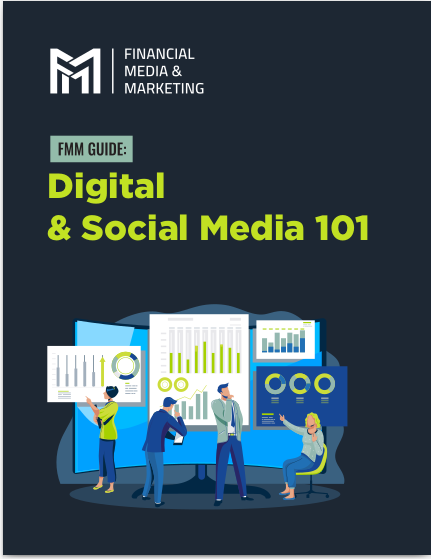Key Takeaways
-
Manual appointment scheduling is not only inefficient but can directly lead to missed business opportunities in 2025’s fast-paced professional landscape.
-
Automating your scheduling process improves your client experience, reduces errors, and gives you back valuable time to focus on more strategic work.
Why Manual Scheduling is Holding You Back
In 2025, every professional’s time is stretched thin. You can’t afford to let something as avoidable as outdated scheduling slow you down. Manually booking appointments means you’re always reacting, instead of operating proactively. The back-and-forth emails, calendar conflicts, and inevitable human error create friction—not just for you, but for your clients too.
Clients today expect seamless interactions. If booking a meeting with you is harder than clicking a link and choosing a time, they might just move on. Time wasted in manual coordination chips away at your reputation for responsiveness and professionalism.
The Hidden Costs of Manual Scheduling
You might think manually managing your calendar is free, but that illusion comes with hidden expenses:
-
Opportunity Costs: Time spent scheduling could be spent on client work, business development, or skill-building.
-
Administrative Overload: Manual systems require constant checking, cross-referencing, and confirmations.
-
Errors and Double-Booking: Even the most detail-oriented professionals can’t avoid every mistake.
-
Delayed Follow-Ups: When you wait to respond to appointment requests, potential clients lose momentum.
In 2025, the expectations for responsiveness and accuracy have risen. Automating your appointment system can eliminate many of these pitfalls.
Your Clients Want Efficiency, Not Friction
Today’s clients want more than just your expertise—they want access to you when they need it. They’re used to:
-
Self-service booking that works 24/7
-
Automatic calendar sync and reminders
-
Immediate confirmation of meeting slots
If you still rely on manual coordination, you introduce delays. Even if you respond quickly, the client might need to check their own availability. Then you go back and forth again. In this fast-paced environment, friction like that drives people elsewhere.
What You Lose Without Automation
The absence of automated scheduling hurts your image and your bottom line. Here’s what you’re giving up:
-
Client Trust: When your system is slow, it signals inefficiency.
-
Time Control: Manual scheduling scatters your day and makes time-blocking nearly impossible.
-
Lead Conversion: Delays in appointment setting often mean cold leads stay cold.
-
Business Scalability: If your system can’t run without you, growth hits a ceiling.
You need systems that scale with you, not ones that depend on your constant supervision.
Scheduling Automation Is Not Just a Luxury Anymore
It’s easy to think automation is something you’ll implement later, when business grows. But in 2025, it’s a standard requirement. You can’t wait for a bottleneck to force your hand. Every professional today—consultants, coaches, legal advisors, medical practitioners—needs reliable, efficient appointment infrastructure.
Here’s what automation typically includes:
-
Calendar integrations (Google, Outlook, etc.)
-
Time zone detection for global clients
-
Buffer settings between meetings
-
Reminder emails or texts
-
Rescheduling or cancellation links
These features eliminate friction and show clients you value their time and yours.
You Don’t Need to Be Tech-Savvy to Streamline Scheduling
One common hesitation is the fear of needing technical knowledge to set up automation. In reality, most modern scheduling tools are built with non-tech professionals in mind. Setup takes as little as 30 minutes and often includes templates, guidance wizards, and integrations with the apps you already use.
You also don’t need to overhaul everything. Start with:
-
Linking your calendar to an online scheduling page
-
Adding a simple booking link to your email signature
-
Setting working hours and meeting types (e.g., consultations, follow-ups)
Once that’s in place, the system handles the rest. You’ve just saved yourself hours of admin work every week.
Client Experience is Your Competitive Edge in 2025
Clients have more choices than ever. What sets you apart isn’t just your expertise—it’s how easy it is to work with you. In a world of instant deliveries and on-demand services, people now expect the same from professionals.
An automated booking experience communicates:
-
You’re modern and client-focused
-
You respect their time
-
You’re prepared and organized
These subtle impressions can win you repeat clients and referrals. If your scheduling system is clunky or inconsistent, it may suggest your services are too.
Managing No-Shows and Cancellations Better
One major frustration professionals face is no-shows. Manual systems often lack the tools to prevent or manage them. Automation reduces these by:
-
Sending reminder emails or SMS before appointments
-
Allowing easy cancellations or rescheduling without direct contact
-
Offering confirmation messages that clients can refer to
You save time and avoid the mental fatigue of chasing clients who forget or don’t show up. Better yet, you make it easy for them to be accountable.
Insights You Can Actually Use
Manual methods offer no tracking, which leaves you guessing what’s working. With automated scheduling tools, you can gather data to improve your business. For instance:
-
How long it takes people to book
-
Which services get the most bookings
-
When your peak booking times are
These insights help you adjust availability, test messaging, and ultimately serve your clients better.
Creating a Branded Booking Experience
In 2025, your scheduling system can also reflect your brand. You can add custom colors, logos, even messaging to your booking pages. When someone sees your calendar, they’re seeing your professionalism.
This adds another layer of polish to your client experience. It’s no longer just a way to book time—it becomes a micro-interaction that reinforces trust.
Setting Boundaries Without Saying No
One underrated benefit of automation is that it lets you set boundaries without seeming unavailable. You can:
-
Block out time for lunch, focus work, or personal commitments
-
Limit how many meetings you take per day
-
Avoid last-minute bookings that throw off your workflow
Clients see only the time slots you’ve approved. You’re still in control, but you never need to say “no” directly.
Syncing With the Way You Work Now
Asynchronous workflows are more common in 2025 than ever before. People are in different time zones, working odd hours, or juggling hybrid schedules. Automation ensures your booking system works for everyone, even when you’re offline.
-
Clients book while you sleep
-
Notifications hit your inbox immediately
-
Calendar blocks update in real time
This level of responsiveness doesn’t just make your life easier—it makes your clients happier, too.
Making the Shift in Under an Hour
Think it’ll take weeks to transition? It won’t. Most professionals can implement a functional automated system in less than an hour.
What you need:
-
A scheduling tool that integrates with your calendar
-
Defined availability and meeting types
-
A place to share the booking link (email, website, social media)
Once you’re live, the system runs without you. That’s time you get back—every day.
Why Now Is the Best Time to Automate
Waiting for a perfect moment to automate your appointment system is like waiting for the wind to stop before setting sail. The longer you wait, the more business you miss. In 2025, efficiency and client service aren’t extras—they’re baseline expectations.
Professionals who adopt automation today will:
-
Convert more leads
-
Retain more clients
-
Reclaim more of their time
Manual booking isn’t just slow—it’s a liability. Your time and your clients are worth more than that.
Put an End to Missed Opportunities
It’s time to shift from reaction mode to a system that works with you, not against you. By automating appointment booking, you eliminate repetitive tasks, reduce errors, and create a more seamless experience for clients.
This one move can streamline your operations, improve your reputation, and help you scale. Don’t let outdated methods be the reason you lose your next great client.










